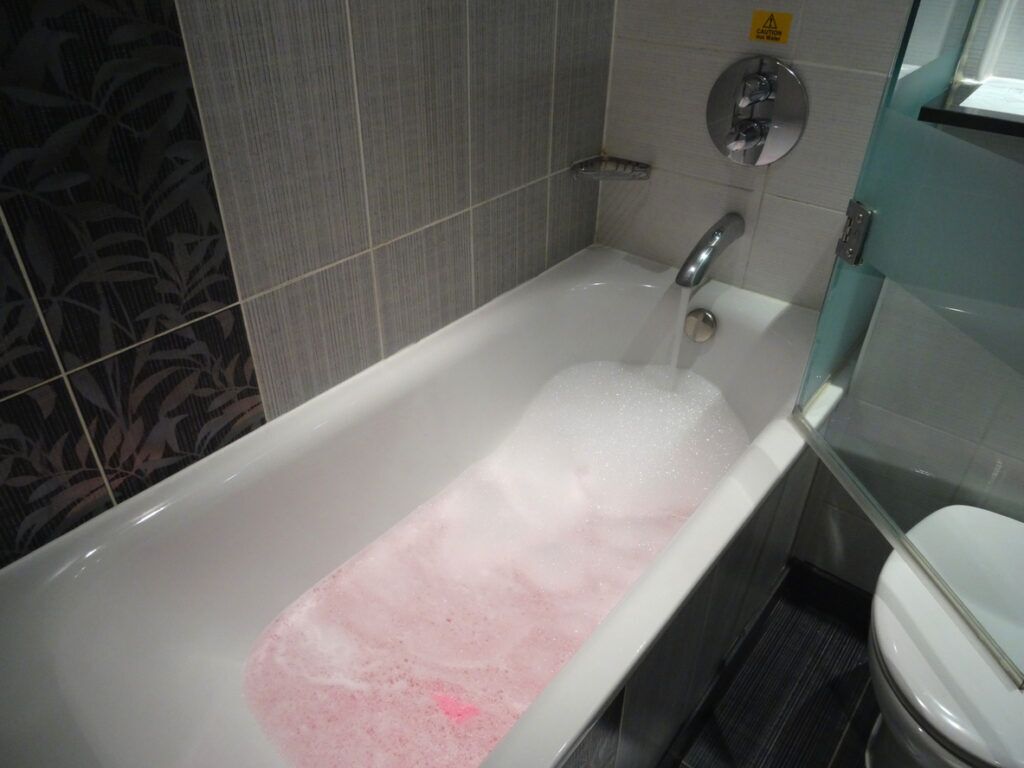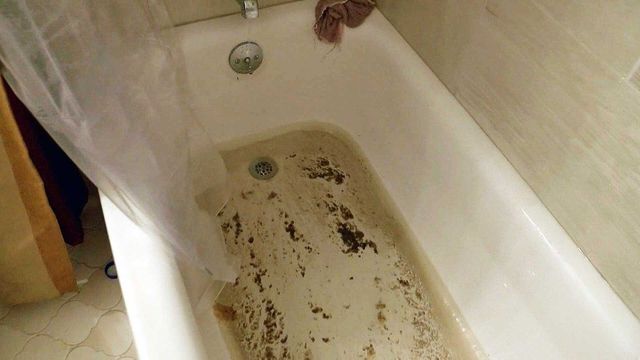Investigating the Causes of Discharge Backflow in the Bathtub
Investigating the Causes of Discharge Backflow in the Bathtub
Blog Article
We have stumbled on the article pertaining to Water Coming up Bathtub Drain directly below on the web and concluded it made perfect sense to relate it with you here.

Sewer back-up in the bath tub can be a traumatic and unhygienic issue for any type of homeowner. Not just is it troublesome, but it additionally postures severe health threats and suggests underlying issues with the plumbing system. Understanding why sewage is turning up through the bathtub is critical for taking suitable action to resolve the problem efficiently.
Intro to the Problem
Usual Reasons for Sewage Back-up
Clogs in the Sewage System Line
Among one of the most typical root causes of sewage backup is a blockage in the sewage system line. This can take place due to the buildup of particles, oil, or foreign items in the pipes, stopping appropriate circulation and triggering sewer to back up into your bath tub.
Tree Root Breach
Tree origins looking for wetness and nutrients can penetrate sewage system lines via tiny fractures or joints. Over time, these origins can expand and increase, creating significant damages to the pipelines and causing sewage back-up concerns.
Understanding the Issue
When sewer starts backing up right into the bathtub, it's a clear indicator of an issue with the drain system. The wastewater that must be streaming far from your home is instead discovering its back right into your space, which can cause substantial damage and health hazards.
Potential Reasons
Several aspects can contribute to sewer back-up in the bath tub. From obstructions in the sewage system line to concerns with the plumbing facilities, determining the root cause is necessary for locating a solution.
Aging Infrastructure
Older homes may have obsoleted plumbing systems that are extra vulnerable to deterioration, splits, and deterioration. As pipes age, they come to be much more vulnerable to leakages and blockages, boosting the possibility of sewage back-up cases.
Heavy Rainfall or Flooding
During durations of heavy rainfall or flooding, the drain system may end up being overwhelmed with excess water, causing backups and overflows. This can result in sewage backing up right into bathtubs and other fixtures inside the home.
Indicators of Sewer Back-up
Foul Odors
Undesirable smells rising from drains or fixtures, specifically in the restroom, might show sewage back-up concerns. These odors are typically solid and consistent, signifying a problem that needs prompt interest.
Slow Draining Fixtures
Bathtubs, sinks, and toilets that drain pipes slowly or not in all could be experiencing sewage back-up. If several fixtures are influenced concurrently, it's most likely that the problem originates from a common point, such as the major sewage system line.
Gurgling Noises
Unusual gurgling or gurgling sounds originating from drains pipes when water is running somewhere else in your home are a measure of air entraped in the plumbing system. This air accumulation can arise from sewage back-up and should be investigated promptly.
Wellness Risks Connected With Sewer Backup
Contamination of Supply Of Water
Sewer back-up can infect the water in your house, positioning a serious health danger to you and your family members. Direct exposure to contaminated water can result in intestinal issues, skin infections, and other diseases.
Mold Growth
Wetness from sewer backup can produce optimal problems for mold and mildew growth in your home. Mold spores can worsen respiratory system problems and trigger allergies in sensitive individuals, making timely cleaning essential.
Spread of Condition
Sewer contains dangerous bacteria, infections, and parasites that can create a range of diseases, including liver disease, cholera, and gastroenteritis. Coming into contact with sewer or infected surface areas puts you in danger of infection.
Tidying up After Sewage Back-up
Disinfection Procedures
Extensively decontaminate and disinfect impacted areas after sewage backup to remove hazardous microorganisms and protect against mold growth. Usage ideal cleaning products and protective equipment to ensure secure and effective cleaning.
Repair of Affected Areas
Repair any kind of damage to floor covering, walls, or components brought on by sewage backup. Depending upon the extent of the damages, you may require to change carpets, drywall, or various other products to restore your home to its pre-loss condition.
Immediate Actions to Take
Shutting Off Water System
In the event of sewage backup, it's vital to turn off the water to prevent further contamination and damages. Locate the major water shutoff valve in your home and shut it off up until the concern can be settled.
Contacting an Expert Plumber
Taking care of sewage back-up is not a DIY task. Contact a certified plumber with experience in taking care of sewage-related problems to evaluate the circumstance and do needed fixings or clean-ups.
Preventing Contact with Contaminated Water
Up until the sewage backup is fixed, avoid contact with contaminated water to prevent the spread of bacteria and virus. Wear protective gear if you need to remain in the affected area and wash your hands thoroughly later.
Safety nets
Regular Upkeep of Sewer Lines
Schedule regular examinations and maintenance of your sewer lines to determine and resolve possible problems before they rise into major problems. This can consist of cleaning particles, checking for tree origin intrusion, and fixing any kind of broken pipes.
Mounting Backwater Valves
Take into consideration installing bayou shutoffs in your plumbing system to avoid sewer from flowing back into your home throughout periods of heavy rainfall or flooding. These valves automatically close when water draws back up, securing your building from contamination.
Proper Disposal of Family Waste
Prevent flushing anything apart from toilet tissue and human waste down the toilet to prevent blockages and obstructions in the drain line. Dispose of grease, oil, and other household chemicals effectively to reduce the danger of plumbing troubles.
Why Is Water Backing Up in My Bathtub When I Flush My Toilet?
What to do about a sewer line clog
First, don’t bother with plunging. No amount of plunging will dislodge the clog in a sewer line. The clog is too far away. Plungers are for clogs in the toilet itself, not the sewer line. Plus, the most likely causes of a sewer clog are:
Tree roots Flushed toys or feminine products Grease buildup Those items don’t move easily. And in the case of tree roots, the roots need to be cut out of the pipe and the pipe will need to be repaired.
You’ll need a closet auger. A closet auger is a type of plumber’s snake with a protective cover to keep from scratching the delicate porcelain toilet. If the clog is further down, you may need to remove the toilet or use one of your cleanouts to get to the clog.
We also recommend doing a video inspection of the drain to ensure that the cause of the clog has been completely removed. Otherwise, you could have the same problem again in a few days or weeks.
https://mspplumbingheatingair.com/blog/why-is-water-backing-up-in-my-bathtub-when-i-flush-my-toilet

Hopefully you enjoyed our article about . Thank you for spending some time to read our piece. Are you aware of another individual who is excited by the topic? Be sure share it. Thank you for your time. Return soon.
Further Details
Report this page